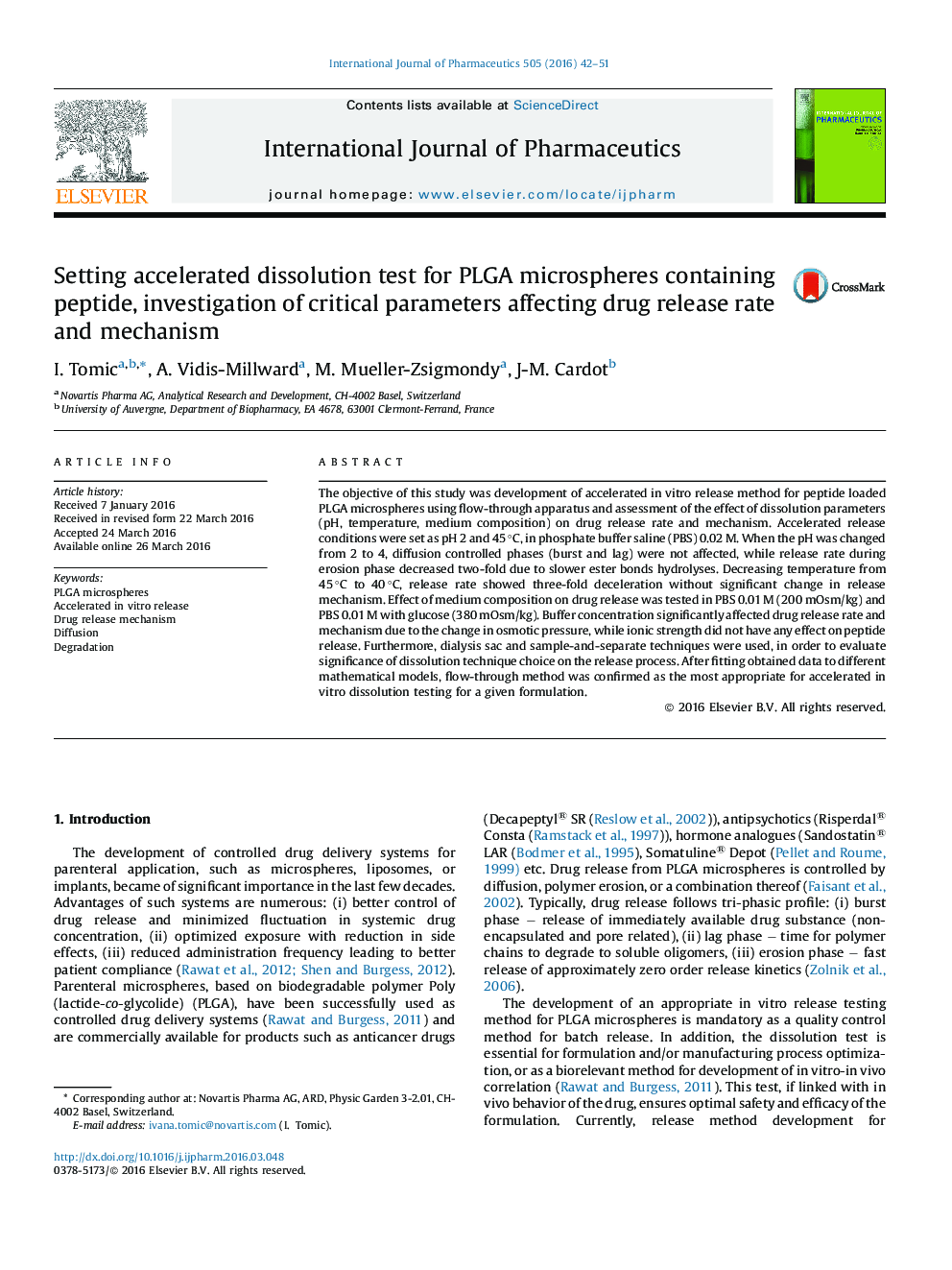| Article ID | Journal | Published Year | Pages | File Type |
|---|---|---|---|---|
| 2500856 | International Journal of Pharmaceutics | 2016 | 10 Pages |
The objective of this study was development of accelerated in vitro release method for peptide loaded PLGA microspheres using flow-through apparatus and assessment of the effect of dissolution parameters (pH, temperature, medium composition) on drug release rate and mechanism. Accelerated release conditions were set as pH 2 and 45 °C, in phosphate buffer saline (PBS) 0.02 M. When the pH was changed from 2 to 4, diffusion controlled phases (burst and lag) were not affected, while release rate during erosion phase decreased two-fold due to slower ester bonds hydrolyses. Decreasing temperature from 45 °C to 40 °C, release rate showed three-fold deceleration without significant change in release mechanism. Effect of medium composition on drug release was tested in PBS 0.01 M (200 mOsm/kg) and PBS 0.01 M with glucose (380 mOsm/kg). Buffer concentration significantly affected drug release rate and mechanism due to the change in osmotic pressure, while ionic strength did not have any effect on peptide release. Furthermore, dialysis sac and sample-and-separate techniques were used, in order to evaluate significance of dissolution technique choice on the release process. After fitting obtained data to different mathematical models, flow-through method was confirmed as the most appropriate for accelerated in vitro dissolution testing for a given formulation.
Graphical abstractFigure optionsDownload full-size imageDownload high-quality image (121 K)Download as PowerPoint slide
